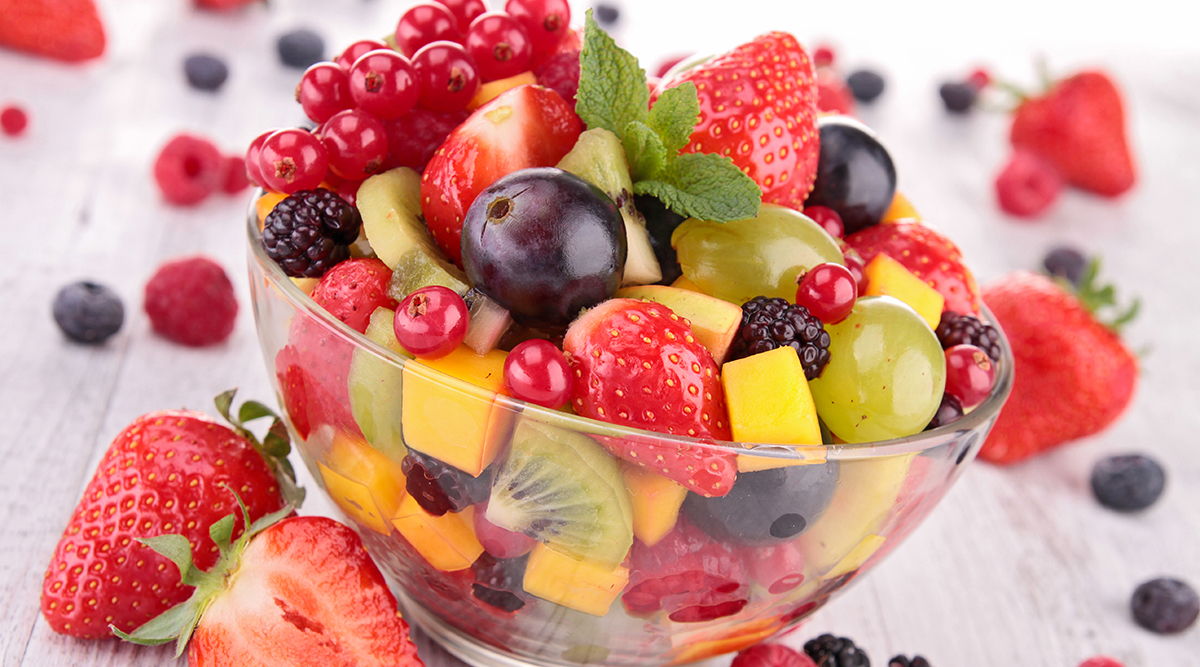
The 2021 Dirty Dozen List is Out, But Do You Understand the Science?
The Environmental Working Group (EWG) has released its annual “Shoppers Guide to Pesticides in Produce,” containing the notorious Dirty Dozen and Clean 15 lists. Just how risky are pesticide residues on the Dirty Dozen fruits and vegetables? IFT Fellow Dr. Carl Winters sheds some light on this question.

The U.S. Department of Agriculture’s MyPlate initiative recommends that consumers “make half your plate fruits and vegetables.” This practical and simple message, if followed, should result in significant health benefits for consumers. Unfortunately, warnings to avoid conventionally produced fruits and vegetables due to the presence of pesticide residues undermines the MyPlate message while increasing consumer fear and guilt.
Since 1995, the Environmental Working Group (EWG), a Washington D.C.-based environmental advocacy organization, has released its annual “Shoppers Guide to Pesticides in Produce.” This guide contains the notorious “Dirty Dozen” list of fruits and vegetables showing the highest “loads” of pesticide residues and urges consumers to purchase organic commodities rather than conventionally grown varieties.
From a toxicological perspective, the key components of consumer risk from pesticides in foods are the toxicity of the pesticides, the levels of the pesticides found in the foods, and the amount of the foods that are consumed. The EWG methodology, however, focuses specifically upon the presence of pesticide residues detected on foods rather than amounts of individual pesticides and completely ignores food consumption and pesticide toxicity.
Just how risky are pesticide residues on the Dirty Dozen fruits and vegetables? Research I published in 2011 with Josh Katz in the peer-reviewed Journal of Toxicology sheds some light on this question.
In our study, we identified the 10 most frequently detected pesticides on each of the 2011 Dirty Dozen fruits and vegetables based upon results of the USDA’s Pesticide Data Program (The EWG used the same pesticide residue database to generate its rankings.) Rather than focusing upon just pesticide detection rates, we performed probabilistic exposure assessments where the actual levels of pesticides detected were combined with food consumption estimates. This allowed us to develop estimates of actual consumer exposure to the pesticides and to compare such exposures with toxicological indicators of safety in the form of the Reference Doses (RfDs) for each of the pesticides. The RfDs are established by the U.S. Environmental Protection Agency and represent levels not considered to pose any health concern for consumers.
What did our study find? Consumer exposure to the pesticides most frequently detected on the Dirty Dozen produce was extremely low and well below the RfDs in all cases. In 75% of the pesticide/commodity combinations, exposure estimates were below 0.01% of the RfD, representing exposures at least one million times lower than doses that do not show any toxicological effects in lab animals when exposed throughout their lifetimes.
Here’s how the EWG’s Shopper’s Guide webpage summarizes the three “riskiest” foods on the 2011 Dirty Dozen list, all of which continue to appear on the 2021 list:
- Apples - Eaten daily by children, 98% of conventional apples had pesticides
- Celery - Highly contaminated, celery tested positive for 57 different pesticides
- Strawberries - A delicious snack for kids and pests, some strawberries had as many as 13 different pesticides
Substituting our findings for the EWG summaries paints a more reassuring picture:
- Apples - Consumer exposure to the 10 most frequently detected pesticides on apples was between 20,000 and 30,000,000 times lower than doses that don’t affect lab animals in long-term studies.
- Celery - Consumer exposure to the 10 most frequently detected pesticides on celery was between 60,000 and 100,000,000 times lower than doses that don’t affect lab animals in long-term studies.
- Strawberries - Consumer exposure to the 10 most frequently detected pesticides on strawberries was between 800,000 and 6,000,000 times lower than doses that don’t affect lab animals in long-term studies.
Additionally, our research indicated that substitution of organic forms of the twelve commodities for conventional forms did not result in any measurable consumer health benefit. This is key because we know that pesticide messaging affects consumer perception of organic compared to conventional and can particularly impact low income shoppers, who likely do not have access to many organic foods, as evidenced by a 2016 study in Nutrition Today.
And in my 2015 study published in the International Journal of Food Contamination, research established that chronic dietary exposure to pesticides in the diet, according to results of the FDA’s 2004–2005 Total Diet Study, continue to be at levels far below those of health concern.
The science is clear: Consumers should be encouraged to eat fruits, vegetables, and grains, whether it is organic or conventional, and should not fear the low levels of pesticide residues found in such foods.
References
Carl K. Winter, Josh M. Katz, "Dietary Exposure to Pesticide Residues from Commodities Alleged to Contain the Highest Contamination Levels", Journal of Toxicology, vol. 2011, Article ID 589674, 7 pages, 2011. https://doi.org/10.1155/2011/589674
About the Author
Carl Winter, PhD, is a specialist in Cooperative Extension Emeritus at UC Davis and an IFT Fellow.
